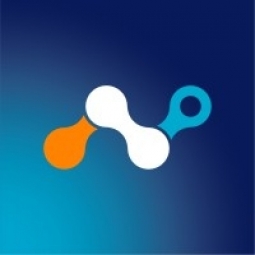Customer Company Size
Large Corporate
Region
- America
Country
- United States
Product
- Netskope Security Cloud platform
- Netskope CASB
- Netskope CCI
Tech Stack
- Cloud Access Security Broker (CASB)
- Cloud Computing
- Data Protection
Implementation Scale
- Enterprise-wide Deployment
Technology Category
- Infrastructure as a Service (IaaS) - Cloud Computing
- Cybersecurity & Privacy - Cloud Security
Applicable Industries
- Education
Applicable Functions
- Human Resources
- Business Operation
Use Cases
- Cybersecurity
Services
- Cloud Planning, Design & Implementation Services
- Cybersecurity Services
About The Customer
Waubonsee Community College is an educational institution located west of Chicago. The college offers students a choice of remote or classroom learning, a decision made in response to the global pandemic. The college's IT department, led by Senior Information Security Manager Tarun Trivedi, is responsible for overseeing the apps that students and faculty use and how they access and store data. The college's CIO places a great emphasis on compliance and industry best practices, and the IT team is committed to being proactive in stemming the risks of data privacy infringements and data exfiltration.
The Challenge
Waubonsee Community College was faced with the challenge of ensuring data security as they transitioned to a hybrid learning model due to the COVID-19 pandemic. This meant that students and faculty were accessing and storing data remotely, increasing the risk of data loss and exposure. The college's IT team needed to be proactive in preventing data privacy infringements and data exfiltration, as well as other threats that might exploit vulnerabilities on user devices. They also needed an efficient and effective way to screen cloud apps for security risks and to ensure compliance with security policies.
The Solution
The college implemented the Netskope Security Cloud platform, which includes the Cloud Access Security Broker (CASB) function. This function scans over 2,500 cloud apps to see if they are being accessed from managed devices. The Netskope client is installed on every managed device, allowing the IT team to constantly monitor alerts and incidents. The platform also provides automatic notification of any exposure of personally identifiable information. To ensure compliance with the college's policy, the real-time coaching feature of Netskope’s Security Cloud platform is used. The IT team is also exploring the data loss prevention (DLP) features of the platform to prevent users from moving copyrighted data or personally identifiable information (PII) from the college’s protected managed infrastructure to unauthorized locations.
Operational Impact
Quantitative Benefit

Case Study missing?
Start adding your own!
Register with your work email and create a new case study profile for your business.
Related Case Studies.

Case Study
Revolutionizing Medical Training in India: GSL Smart Lab and the LAP Mentor
The GSL SMART Lab, a collective effort of the GSL College of Medicine and the GSL College of Nursing and Health Science, was facing a challenge in providing superior training to healthcare professionals. As clinical medicine was becoming more focused on patient safety and quality of care, the need for medical simulation to bridge the educational gap between the classroom and the clinical environment was becoming increasingly apparent. Dr. Sandeep Ganni, the director of the GSL SMART Lab, envisioned a world-class surgical and medical training center where physicians and healthcare professionals could learn skills through simulation training. He was looking for different simulators for different specialties to provide both basic and advanced simulation training. For laparoscopic surgery, he was interested in a high fidelity simulator that could provide basic surgical and suturing skills training for international accreditation as well as specific hands-on training in complex laparoscopic procedures for practicing physicians in India.

Case Study
IoT platform Enables Safety Solutions for U.S. School Districts
Designed to alert drivers when schoolchildren are present, especially in low-visibility conditions, school-zone flasher signals are typically updated manually at each school. The switching is based on the school calendar and manually changed when an unexpected early dismissal occurs, as in the case of a weather-event altering the normal schedule. The process to reprogram the flashers requires a significant effort by school district personnel to implement due to the large number of warning flashers installed across an entire school district.

Case Study
Implementing Robotic Surgery Training Simulator for Enhanced Surgical Proficiency
Fundacio Puigvert, a leading European medical center specializing in Urology, Nephrology, and Andrology, faced a significant challenge in training its surgical residents. The institution recognized the need for a more standardized and comprehensive training curriculum, particularly in the area of robotic surgery. The challenge was underscored by two independent studies showing that less than 5% of residents in Italian and German residency programs could perform major or complex procedures by the end of their residency. The institution sought to establish a virtual reality simulation lab that would include endourological, laparoscopic, and robotic platforms. However, they needed a simulator that could replicate both the hardware and software of the robotic Da Vinci console used in the operating room, without being connected to the actual physical console. They also required a system that could provide both basic and advanced simulation training, and a metrics system to assess the proficiency of the trainees before they performed surgical procedures in the operating theater.

Case Study
Edinburgh Napier University streamlines long-distance learning with Cisco WebEX
• Geographically dispersed campus made in-person meetings costly and inconvenient.• Distance-learning programs in Malaysia, India, and China required dependable, user-friendly online tools to maximize interaction in collaborative workspaces.• Virtual learning environment required a separate sign-in process, resulting in a significant administrative burden for IT staff and limited adoption of collaboration technology.

Case Study
8x increased productivity with VKS
Before VKS, a teacher would spend a lot of time showing a group of 22 students how to build a set of stairs within a semester of 120 hours. Along with not leaving the teacher much time to provide one-on-one support for each student to properly learn carpentry, it also left a considerable amount of room for error. Key information would be misinterpreted or lost as the class was taught in the typical show-and-tell way.

Case Study
Scalable IoT Empowering GreenFlex's Sustainable Growth
GreenFlex, a company that supports sustainable development, decarbonization, and energy efficiency, faced several challenges in its quest to expand its business. The company needed to deploy a robust and sustainable IoT technology to support its growth. It was crucial for them to monitor and control devices at customer sites in a safe and reliable manner. They also needed to integrate devices across a range of communication protocols and gather and act on data to meet efficiency targets. GreenFlex had previously built IoT capabilities into its digital platform, GreenFlexIQ, to monitor and manage customer sites remotely. However, they soon realized that they needed a new platform to support their ambitions. They needed a platform that could scale to connect more devices for production management and make it easier for the operations team to manage devices in the field.







